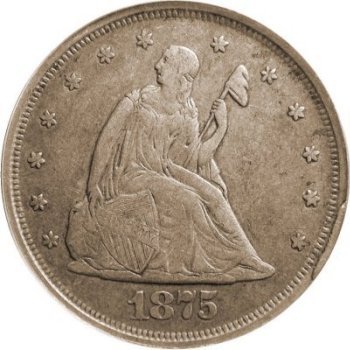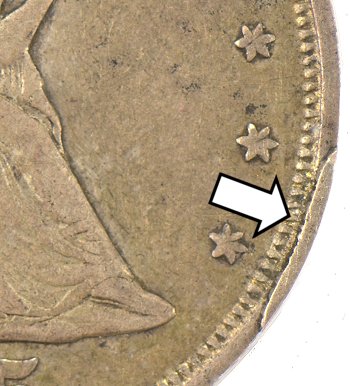7.2 Cuds
A cud is the common name for a coin struck by a die with a major break in its surface. Although a die state rather than an error, many collectors consider cuds as the result of an error
in die preparation. When advanced stages of die cracks or breaks occur, occasionally pieces of the die fall away leaving an open space where the die face used to be. Thus, there is no
surface to strike the coin. A coin struck from such a die will have a shapeless blob, or cud, of metal where the coinís design would normally be.
In the twenty-cent series, one obverse die (1875-S Obverse 6 of BF-9) suffered this problem along its edge. The die then produced coins with a pronounced cud on the rim. While not as
spectacular as other types of cuds that affect a broader portion of the coin, rim cuds are the only type of cud known for twenty-cent pieces. Two other 1875-S obverse dies (Obverse 4 of
BF-5 and Obverse 9 of BF-13) each develop a minor rim break that exhibits varying degrees of raised metal, but neither has a single large area of raised metal.


Rim cud on an 1875-S (BF-9)
